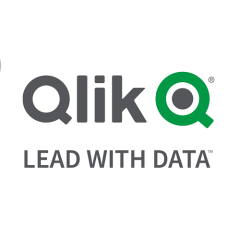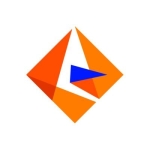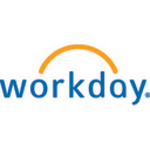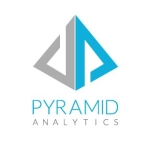What is our primary use case?
We primarily use the solution for:
Business Intelligence. Qlik Sense is used by organizations to gain insights and make informed decisions by analyzing their data.
Data Visualization. Qlik Sense enables users to create interactive and visually appealing dashboards, reports, and charts to present data in a meaningful way.
Data Analytics. Qlik Sense provides tools to perform data analysis, including data exploration, discovery, and predictive analytics.
Collaboration. Qlik Sense allows teams to collaborate and share data insights and reports with each other, facilitating better communication and decision-making.
Data Governance. Qlik Sense provides features to manage and govern data, ensuring data security, accuracy, and regulation compliance.
How has it helped my organization?
The solution has helped out the organization via:
Faster and More Informed Decision Making. Qlik Sense enables users to analyze and visualize data in real time, providing insights that help organizations make informed decisions faster. It also enables users to explore data from multiple perspectives, providing a complete understanding of their data.
Increased Efficiency and Productivity. Qlik Sense is a self-service analytics tool that enables business users to create their reports and dashboards, reducing their dependence on IT resources. This increases productivity by enabling users to get the information they need when they need it without having to wait for IT support.
Improved Data Quality and Governance. Qlik Sense provides tools for data quality management, enabling organizations to maintain clean, accurate, and reliable data. It also provides features for data governance, ensuring data security and compliance with regulations.
Enhanced Collaboration. Qlik Sense enables users to share data insights and reports with each other, facilitating better communication and collaboration. It also enables users to collaborate on data analysis, improving the quality of insights generated.
Cost Reduction. By enabling users to create their reports and dashboards, Qlik Sense reduces the cost of IT resources required for data analysis. It also enables organizations to identify cost-saving opportunities by analyzing data across different departments and operations.
What is most valuable?
The most valuable aspects of the solution include:
Data Visualization. Qlik Sense provides a variety of options to visualize data, including charts, tables, and graphs, making it easier for users to interpret data and gain insights.
Associative Model. Qlik Sense uses an associative model that allows users to explore data relationships in real-time, enabling them to ask and answer ad-hoc questions without the need for pre-aggregated data.
Self-Service Analytics. Qlik Sense is designed to be a self-service analytics tool, allowing business users to create their reports and dashboards without requiring IT intervention.
Data Storytelling. Qlik Sense allows users to create data stories that provide a narrative around their data, making it easier to communicate data insights and analysis to non-technical stakeholders.
Collaboration. Qlik Sense provides collaboration features that enable users to share their insights with others, such as creating and sharing dashboards, reports, and visualizations, commenting on and discussing data, and co-authoring apps.
What needs improvement?
I'd like to see the following improvements:
Improved Data Preparation and integration. Qlik Sense could include additional features for data preparation and integration, making it easier for users to clean, transform, and integrate data from various sources.
Advanced Analytics and Machine Learning. Qlik Sense could include more advanced analytics and machine learning features, allowing users to build predictive models and perform advanced statistical analysis on their data.
Enhanced Collaboration and Sharing. Qlik Sense could improve collaboration features, such as real-time collaboration and commenting on visualizations. It could also improve sharing capabilities, such as embedding visualizations and reports into external websites or applications.
Mobile Optimization. Qlik Sense could include more mobile-optimized features, allowing users to access and analyze data on-the-go, on any device.
Natural Language Processing. Qlik Sense could incorporate natural language processing (NLP) technology, allowing users to ask questions and receive answers in natural language, making data analysis more accessible to non-technical users.
Improved Security and Governance. Qlik Sense could include additional features for data security and governance, such as more granular access controls, audit trails, and compliance reporting.
For how long have I used the solution?
I've been using the solution for nine years.
What do I think about the stability of the solution?
Qlik Sense is very stable, especially when we are talking about panels with more than 200 million rows.
What do I think about the scalability of the solution?
The scalability of Qlik Sense is impressive, both horizontally and vertically. The software is really designed for the use of available processing and RAM memory.
How are customer service and support?
Customer support is good, yet it could improve as sometimes it takes a little while for accurate responses.
How would you rate customer service and support?
Which solution did I use previously and why did I switch?
I had already used traditional BI, however, the change or evolution process was very time-consuming. We achieved more agility with the use of Qlik Sense.
How was the initial setup?
The initial setup is simple and straightforward. It is very easy.
What about the implementation team?
We implemented the product with the supplier team. They usually have some tricks. That said, after following the entire process, we concluded that our internal team could have done the implementation.
They have an excellent team of suppliers that are fully committed to sharing knowledge with our team.
What was our ROI?
In terms of the ROI of Qlik Sense, we thought it might take a while. However, it surprised us with a return in six months.
What's my experience with pricing, setup cost, and licensing?
The entire setup process is very simple. The licensing fee seems high at first. That said, the productivity and speed of delivery make up for it. There have been no billing surprises, as there is no need for other acquisitions, such as databases.
Which other solutions did I evaluate?
I also evaluated Tableau and Power BI.
What other advice do I have?
The cost of licensing seems high and yet it is worth every penny, as the delivery of the panels is very fast.
Which deployment model are you using for this solution?
On-premises
Disclosure: My company does not have a business relationship with this vendor other than being a customer.























I know Qlik Sense, Tableau, and Power BI as Business Intelligence tools and I have to say that Qlik's backend feature is not equal to the others!
Also, Qlik is constantly updated with the market and trends. Talking about Qlik SaaS, each month a new feature is released (mainly related to the frontend part) that adds an easier way to develop an application!